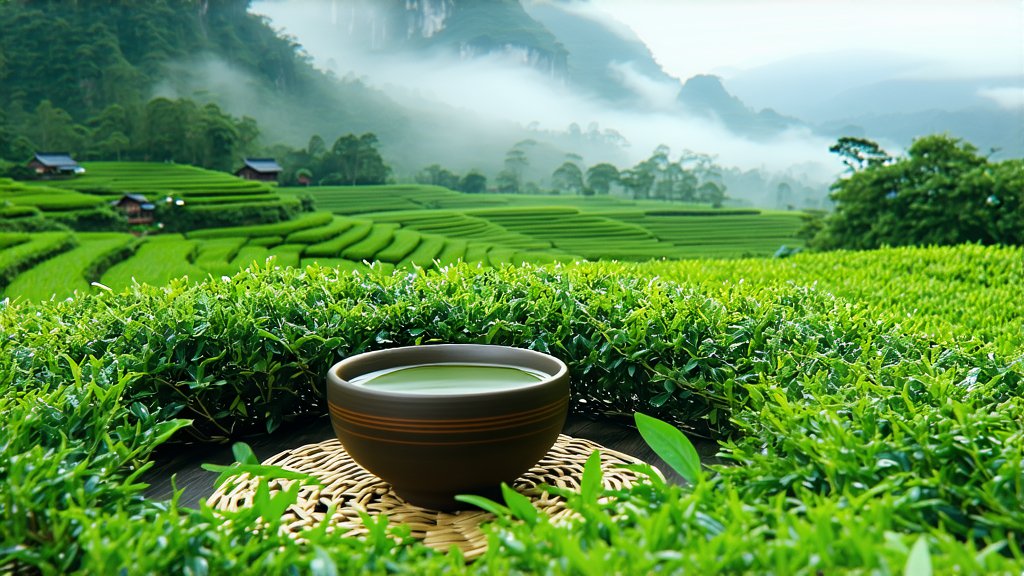
In the heart of China's Zhejiang province lies the enchanting city of Hangzhou, where the legendary West Lake mirrors the beauty of its surrounding landscapes. Nestled within this picturesque setting is the birthplace of one of China's most renowned green teas – Dragon Well (Longjing) Tea. With a history spanning over a thousand years, Dragon Well Tea has become an emblematic representation of Chinese tea culture and craftsmanship, captivating tea enthusiasts worldwide with its unique characteristics and exquisite flavor profile.
A Glimpse into History
The origins of Dragon Well Tea can be traced back to the Tang Dynasty (618-907 AD), but it gained prominence during the Qing Dynasty (1644-1912). According to local lore, the tea was named after a dragon that once lived in the West Lake. When the emperor ordered the execution of this mythical creature, its blood stained the water, creating a well from which the tea grew. This fascinating tale, while likely apocryphal, adds to the mystique surrounding this exceptional tea.
Varieties of Dragon Well Tea
Dragon Well Tea primarily comes in two main varieties: Lion Peak and Mellow Spring. Lion Peak, grown on the slopes facing the West Lake, is considered the superior grade due to its ideal growing conditions and meticulous cultivation practices. Mellow Spring, on the other hand, is harvested from areas slightly further away from the lake but still maintains high quality standards.
Both varieties share similar characteristics but exhibit subtle differences in flavor and aroma profiles. Lion Peak is known for its smoother, sweeter taste with a more pronounced chestnut undertone, whereas Mellow Spring offers a slightly more astringent and vegetal flavor, often described as having a "greener" character.
The Art of Crafting Dragon Well Tea
The production of Dragon Well Tea is a testament to the skill and dedication of Chinese tea artisans. The process begins with the careful selection of tea leaves, typically from the Camellia sinensis plant variety known as "Longjing 43." These leaves are hand-picked, ensuring only the youngest and most tender shoots are chosen.
Once harvested, the leaves undergo several stages of processing:
- Fixation: Freshly picked leaves are quickly heated in large woks or pans to halt oxidation, preserving their vibrant green color and fresh flavor.
- Shaping: Master tea makers use their hands to shape the leaves into their distinctive flat appearance, resembling the shape of a dragon's well or ancient Chinese coins.
- Drying: The shaped leaves are then gently dried to remove excess moisture, enhancing their shelf life without compromising the delicate flavors.
- Sorting: Finally, the dried tea is meticulously sorted to ensure uniformity in size and quality, with larger leaves often reserved for premium grades.
This labor-intensive process requires both precision and artistry, with each step contributing to the tea's unique character and exceptional quality.
The Ritual of Tasting Dragon Well Tea
Tasting Dragon Well Tea is not merely an act of consumption but a meditative experience that engages all five senses. To truly appreciate this tea, follow these steps:
- Warm the Teaware: Begin by rinsing your teapot and cups with hot water to warm them up and enhance the tea's aroma.
- Measure the Leaves: Use approximately 3 grams of Dragon Well Tea per 150ml of water. Place the leaves in the teapot, allowing room for expansion.
- Boil the Water: Heat water to around 80°C (176°F). Avoid boiling, as excessive heat can scorch the delicate leaves.
- Steep the Tea: Pour the hot water over the leaves, swirling gently to ensure even saturation. Steep for about 2-3 minutes, adjusting based on personal preference for stronger or milder flavors.
- Observe the Liquor: As the leaves unfurl, observe their graceful dance and the transformation of the clear water into a pale yellow-green hue, reminiscent of springtime foliage.
- Inhale the Aroma: Before taking your first sip, bring the cup close to your nose and inhale deeply, savoring the fresh, vegetal notes intertwined with hints of chestnut and orchid.
- Sip Slowly: Take small sips, allowing the tea to coat your palate. Notice the initial sweetness followed by a subtle astringency that lingers on the tongue, leaving a clean, refreshing finish.
- Reflect: As you continue sipping, take a moment to reflect on the tea's complexity and how it evokes a sense of tranquility and connection to nature.
Dragon Well Tea is not just a beverage; it is a journey through time, tradition, and terroir—an invitation to explore the depths of Chinese tea culture with every cup.
In conclusion, Dragon Well Tea stands as a shining example of China's rich tea heritage and the artistry involved in its creation. From its storied past to its meticulous crafting process and the meditative ritual of tasting, this tea encapsulates the essence of harmony between man and nature. Whether enjoyed alone as a moment of quiet reflection or shared among friends to foster connection, understanding, Dragon Well Tea continues to enchant and inspire tea lovers around the globe.